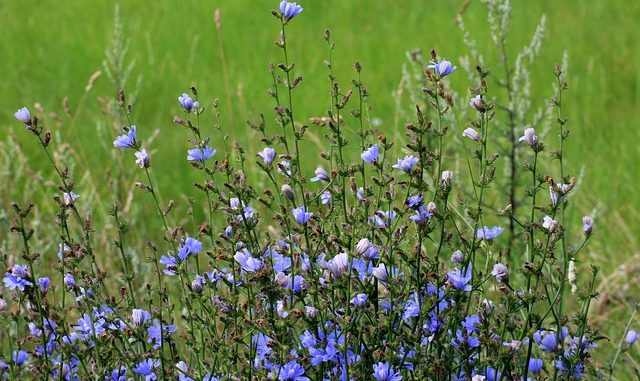
Common chicory (Cichorium intybus L.) is herbaceous plant belonging to the Asteraceae family. It has spread all over the world and is especially common in temperate regions of Eurasia and North America (Sinkovič et al., 2014; 2015). In Italy, it grows in all regions, including islands (Sardinia and Sicily), up to midmountain level (800 m). It is an extremely polymorphic species that has not been thoroughly studied, yet.
Chicory is used in medicine even into early antiquity. It was, in fact, known and appreciated for its therapeutic properties by the Greeks and Romans. Many traditional uses have recently been confirmed by scientific evidence. Several studies carried out on chicory led to the identification and isolation of a wide variety of phytochemicals including anthocyanins (Nørbæk et al., 2002), coumarins, flavonoids, fructans, and sesquiterpene lactones. Both roots and shoots are used as food, but the most frequently consumed organs are the rosette basal leaves and stout young sprouts (turions) typical of some cultivated species, organs that are eaten raw or cooked.
References
Nørbæk, R., Nielsen, K., and Kondo, T. (2002) Anthocyanins from flowers of Cichorium intybus. Phytochemistry, 60, no. 4, pp. 357–359
Sinkovič, L., Hribar, J., Žnidarčič, D., Treutter, D and Vidrih, R. (2014) Comparison of the phenolic profiles of forced and unforced chicory (Cichorium intybus L.) cultivars. Agriculturae Conspectus Scientificus, 79, (2), pp. 133–137
Sinkovič, L., Hribar, J., Vidrih, R., Ilin, Z.M. and Žnidarčič, D. (2015) Fatty acid composition of leaves of forced chicory (Cichorium intybus L.). Archives of Biological Sciences, 1, 26 pages



Leave a Reply